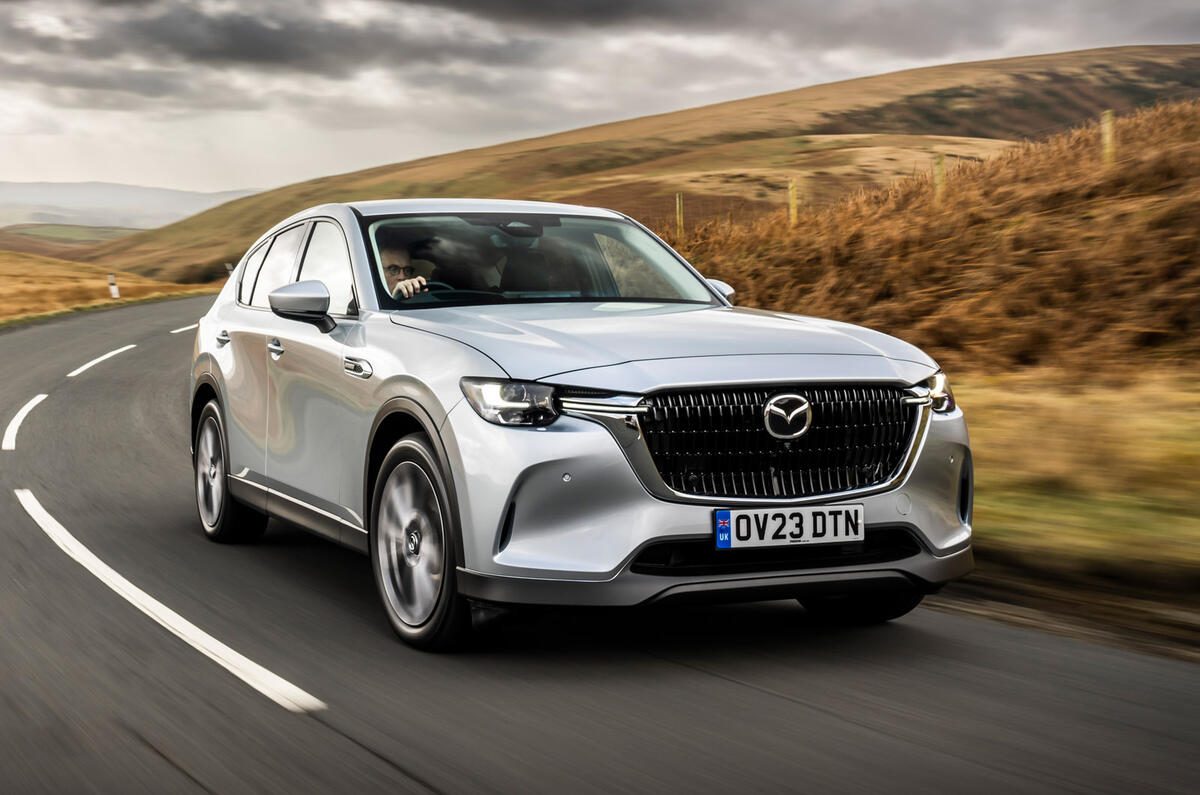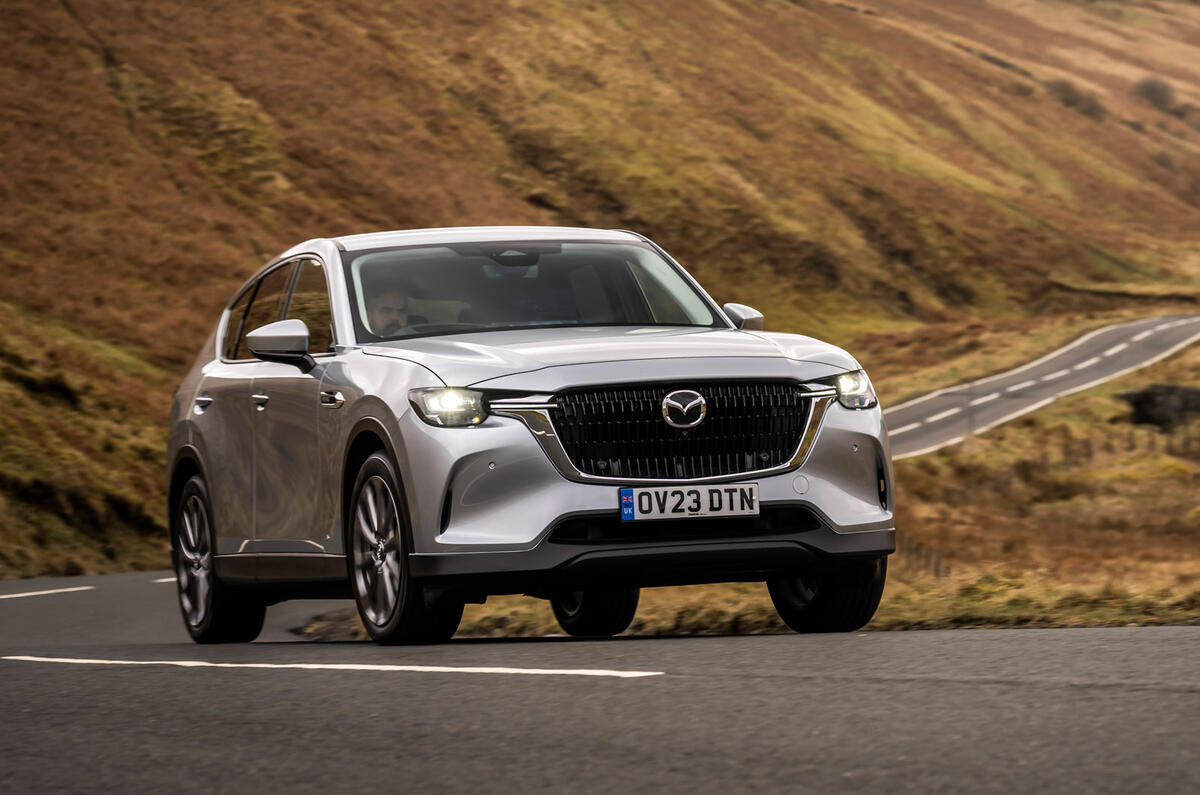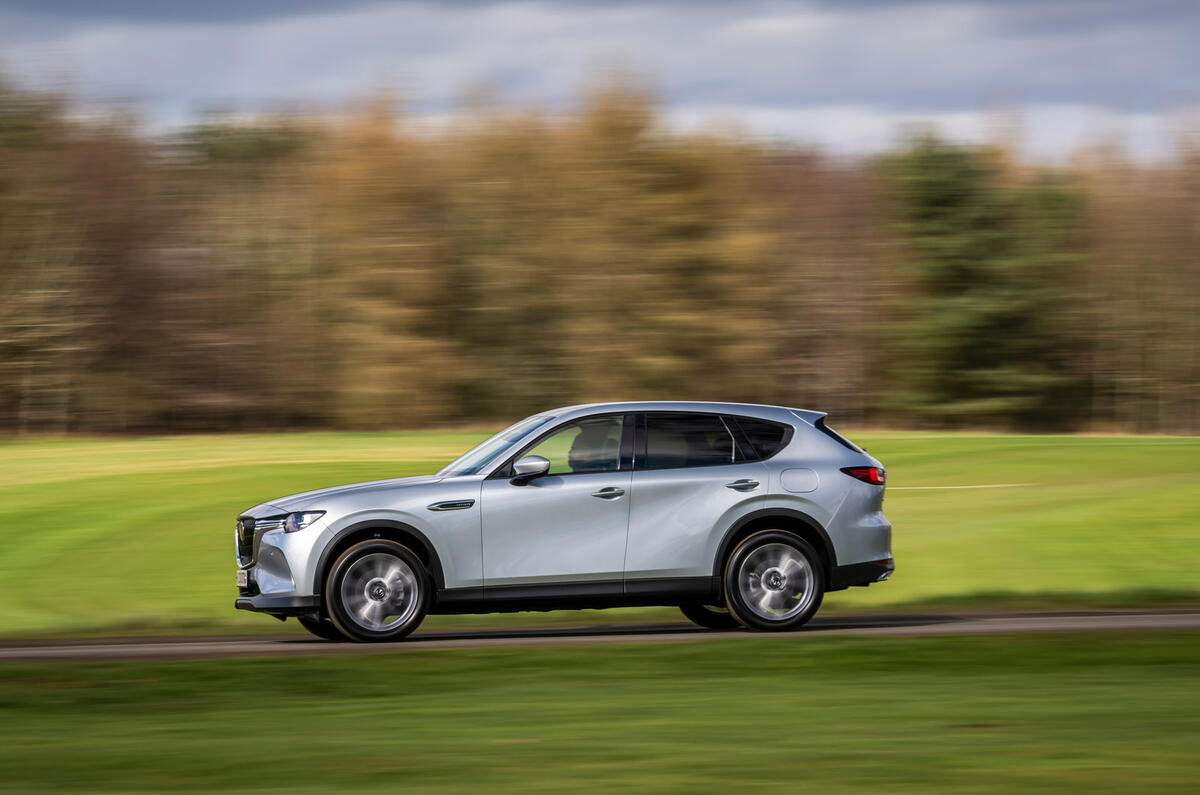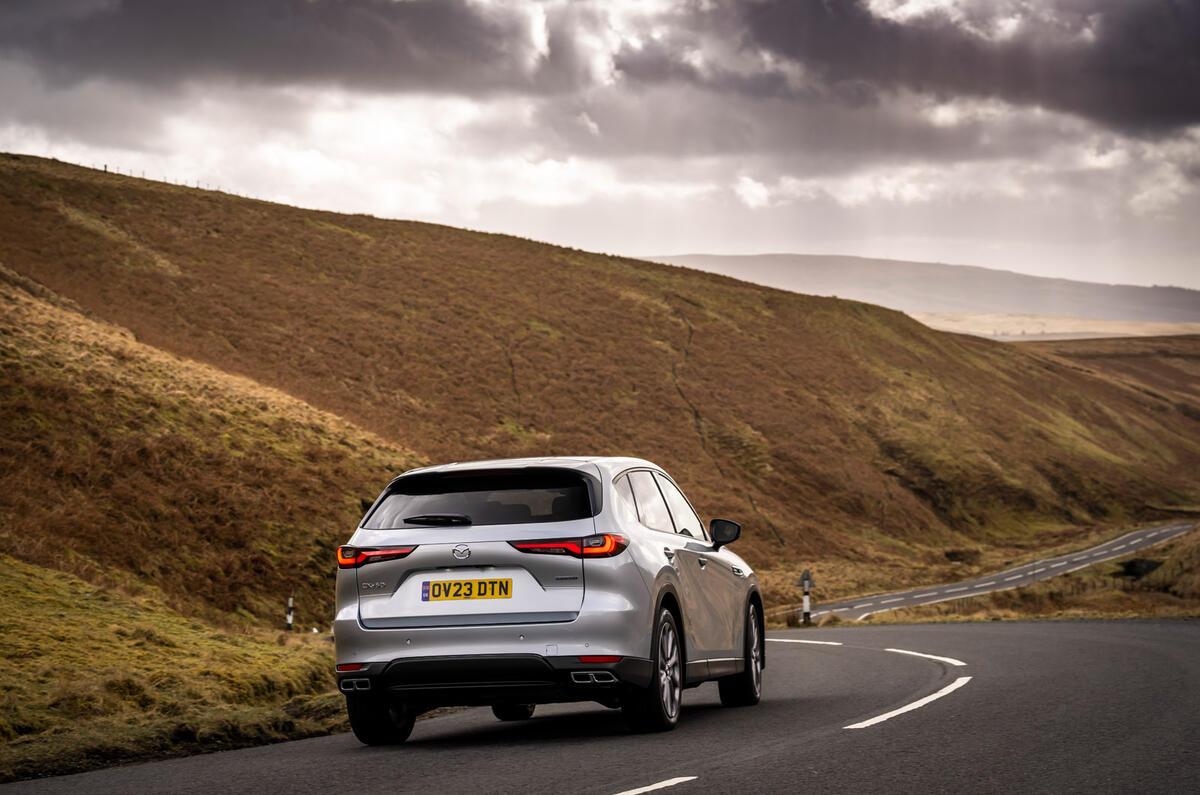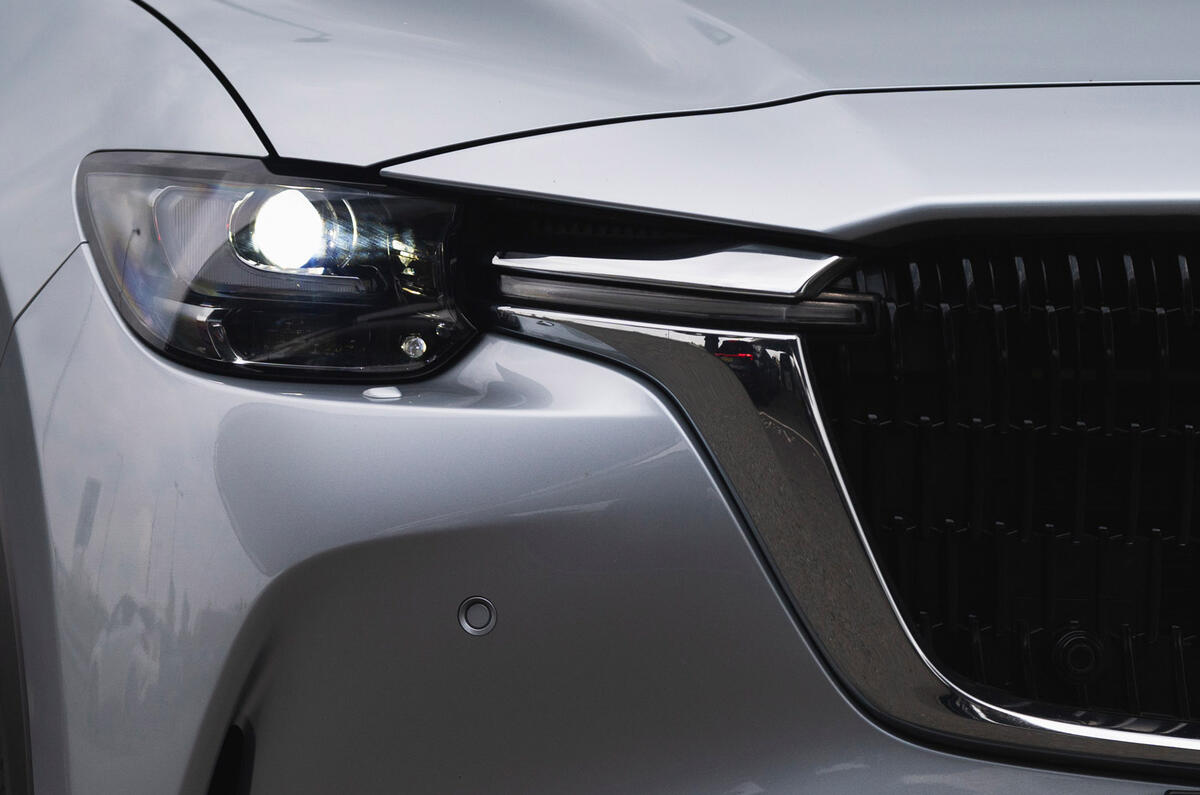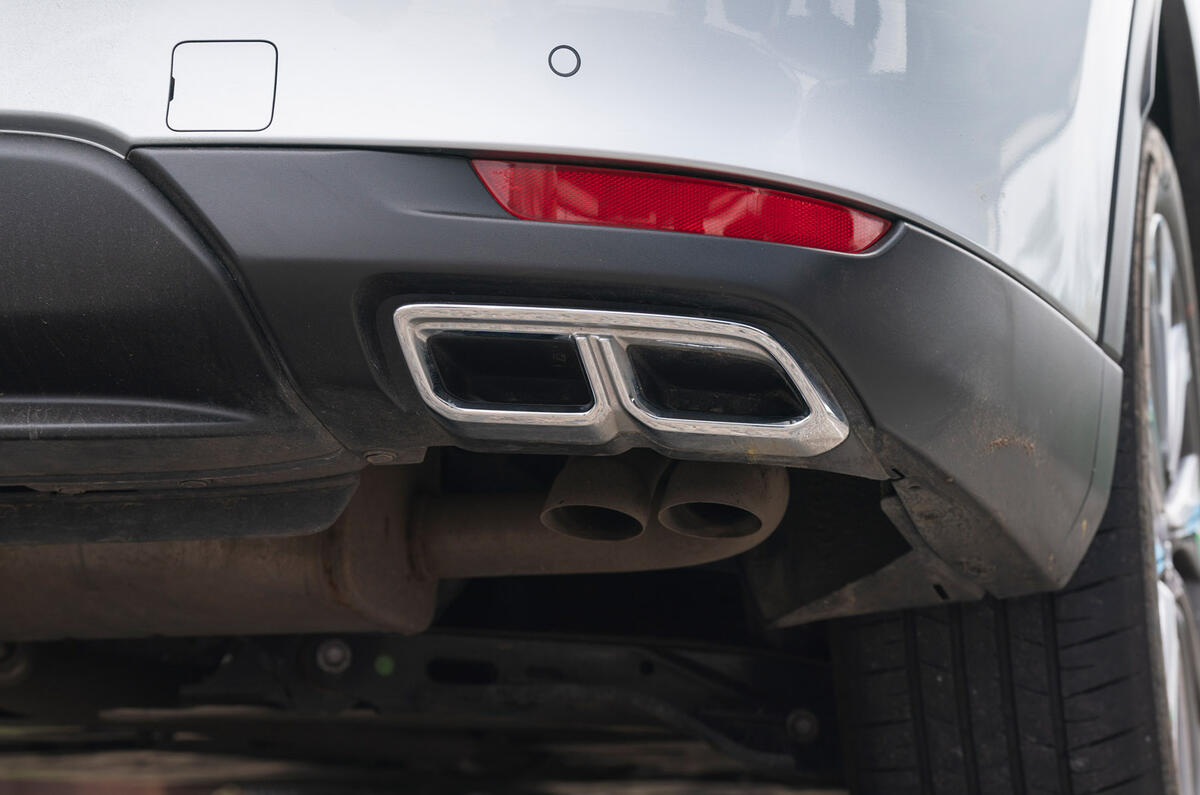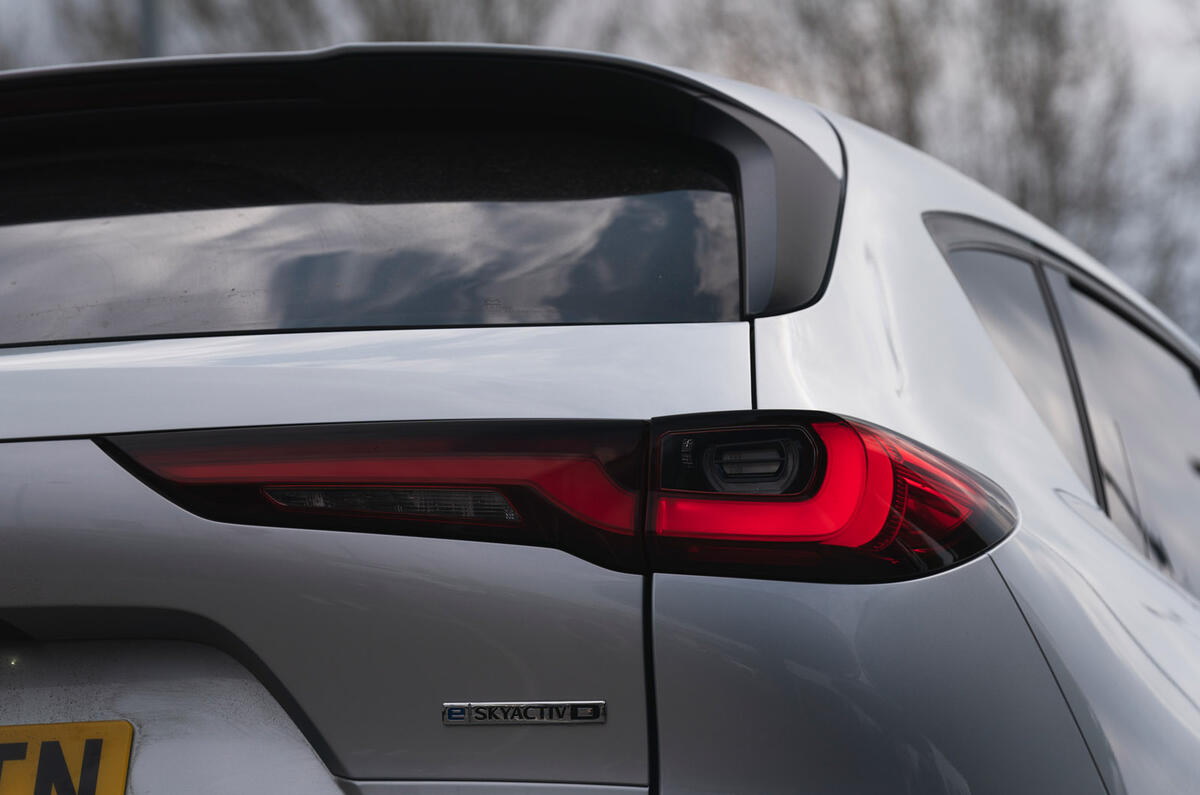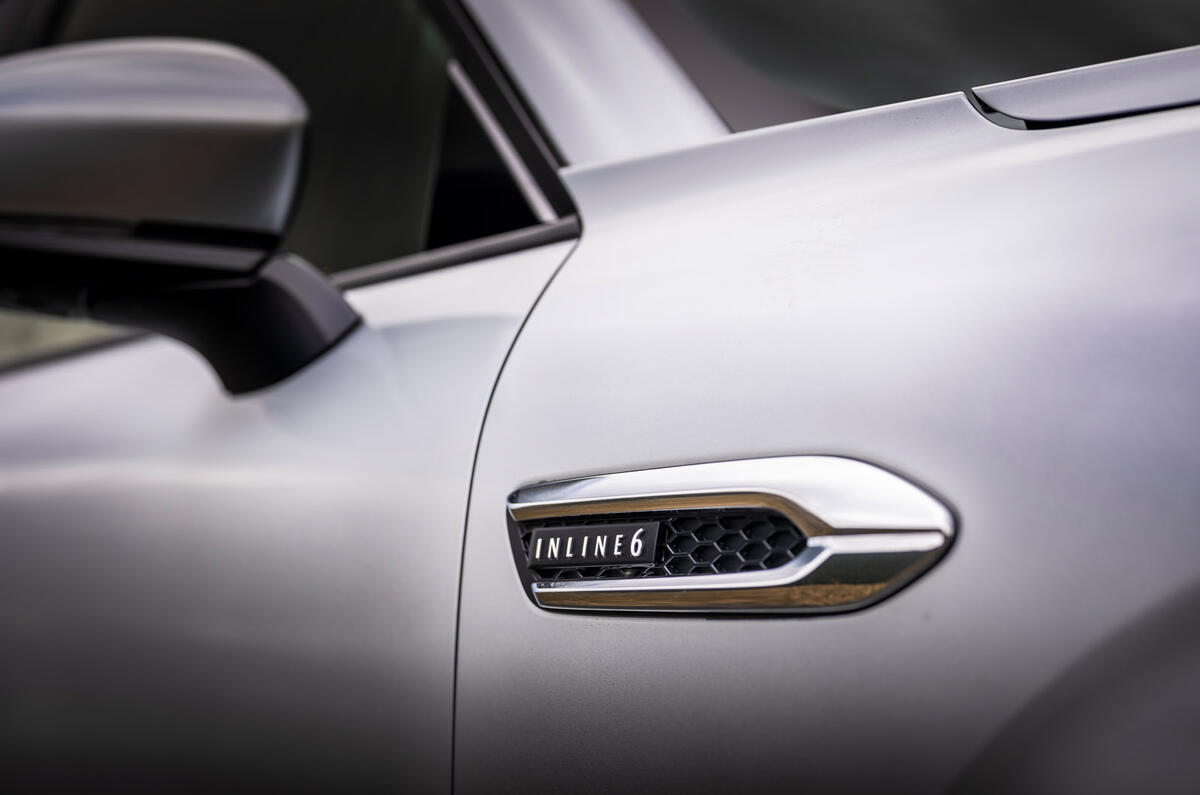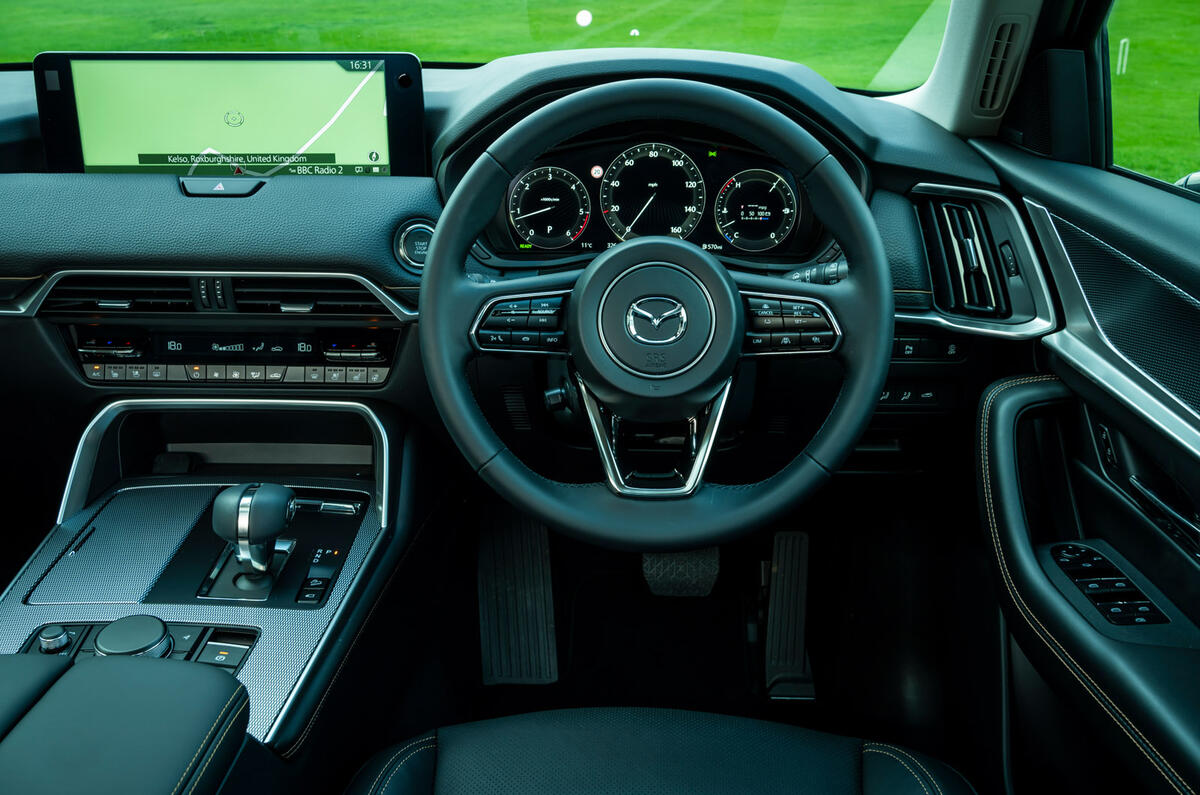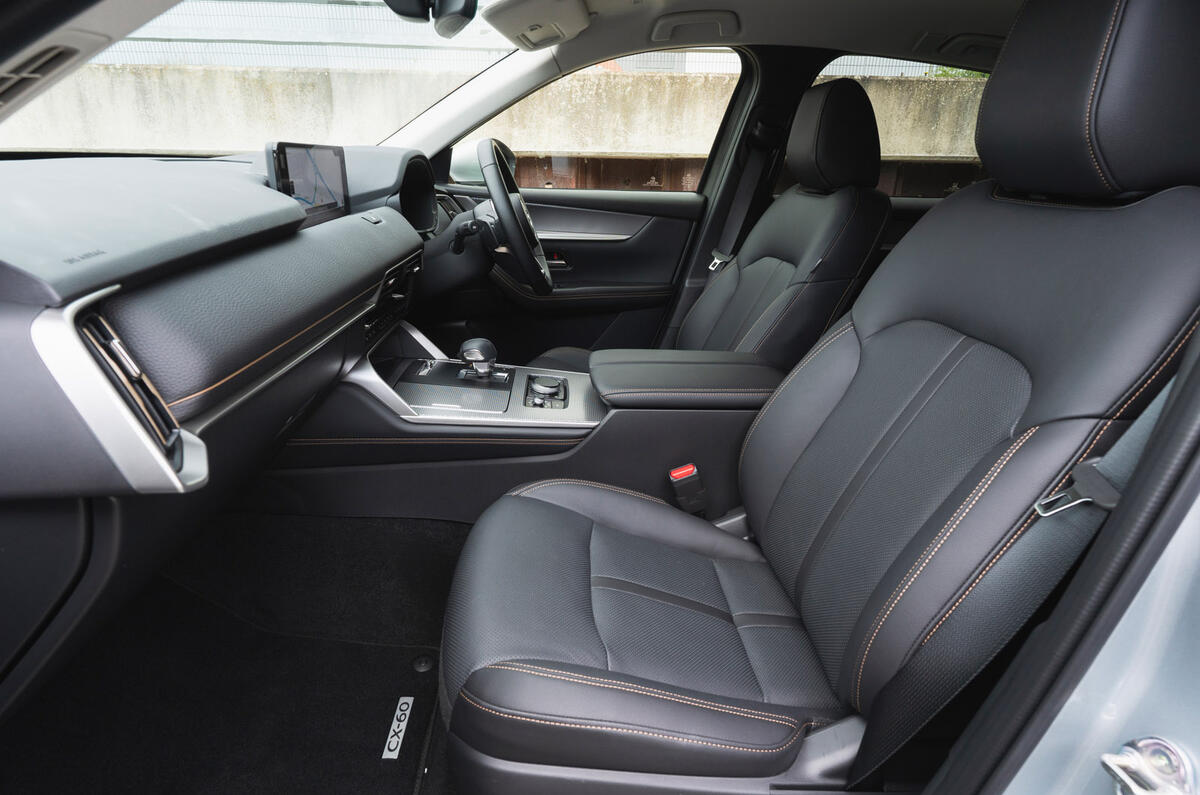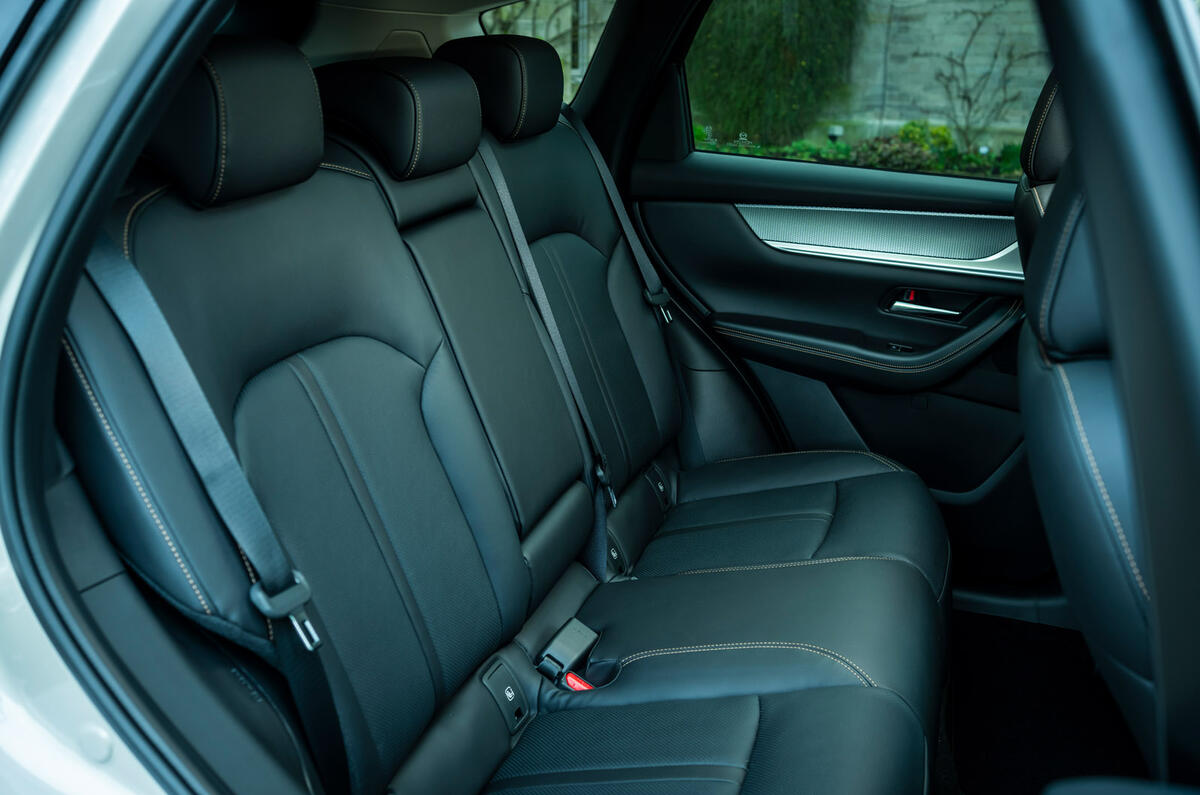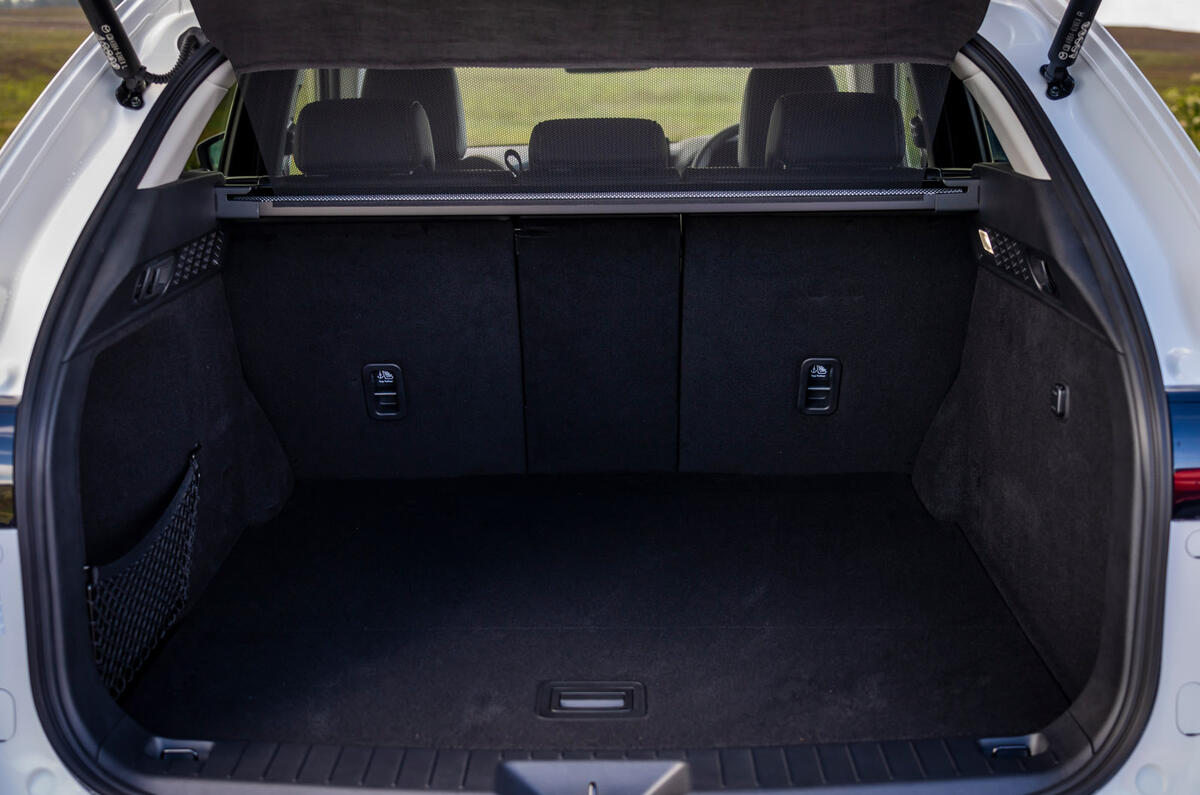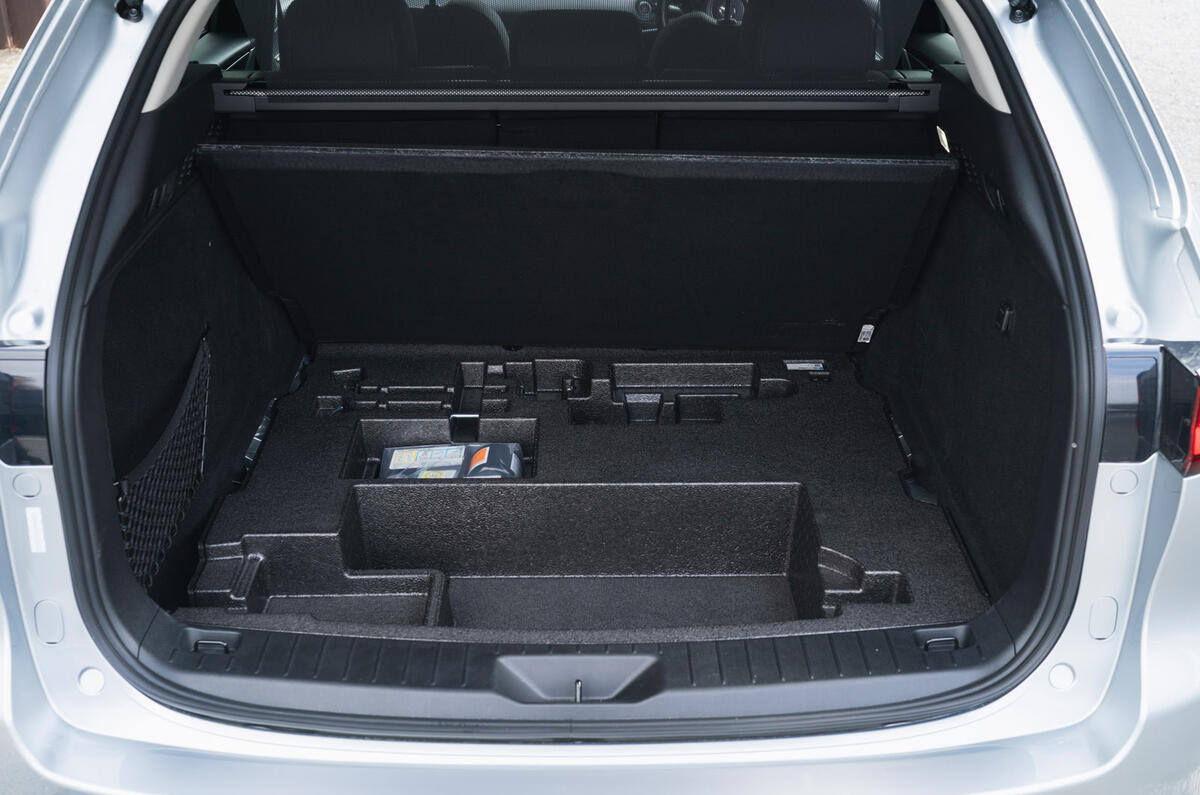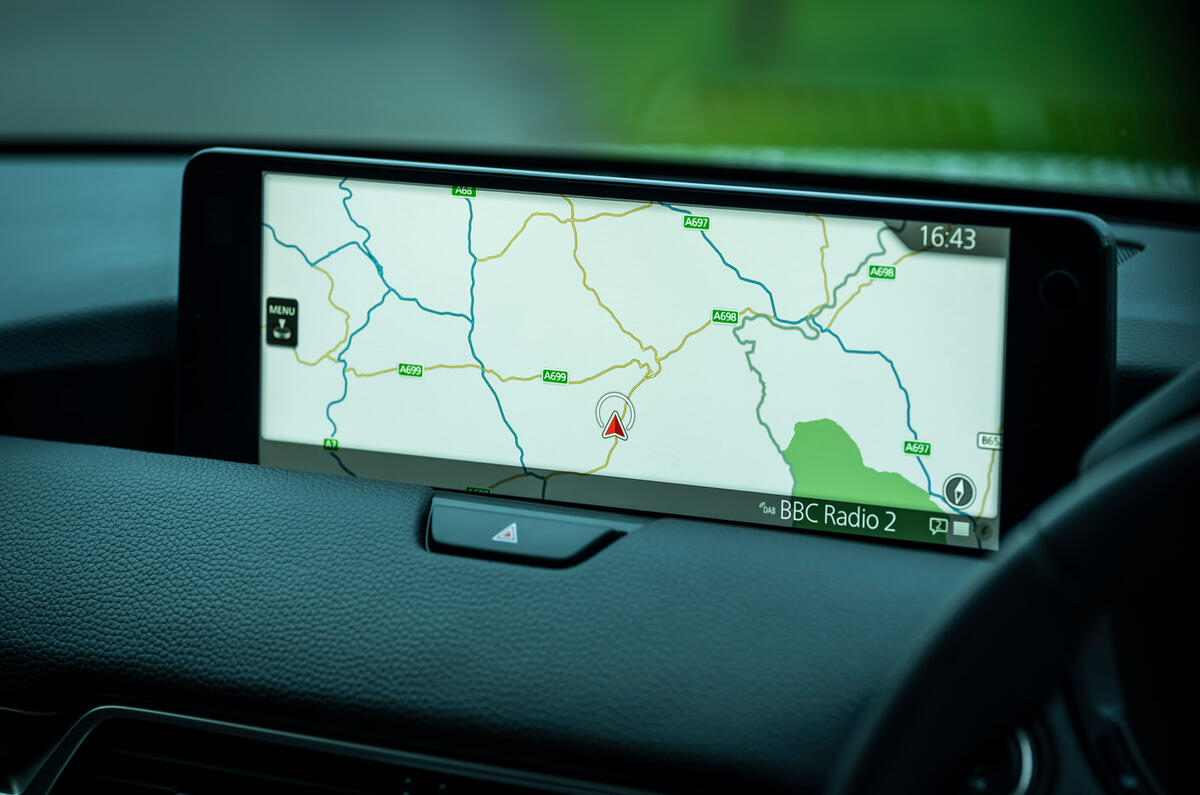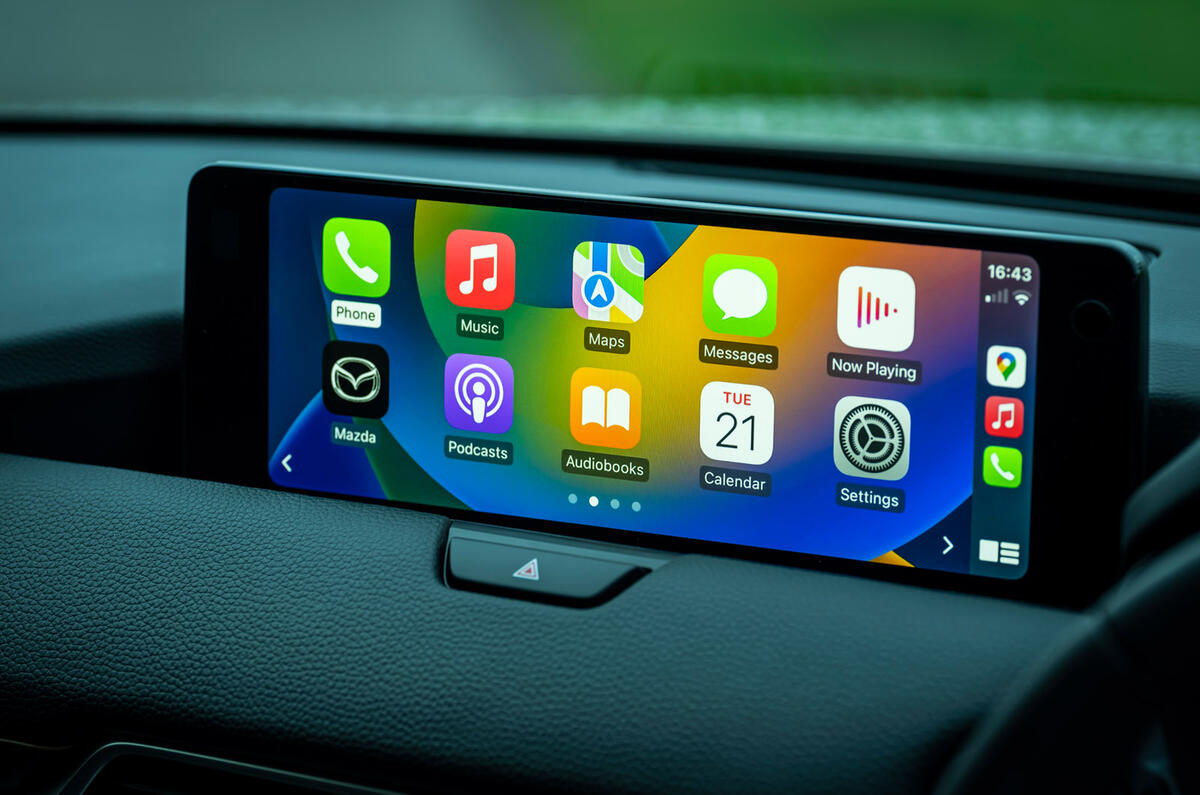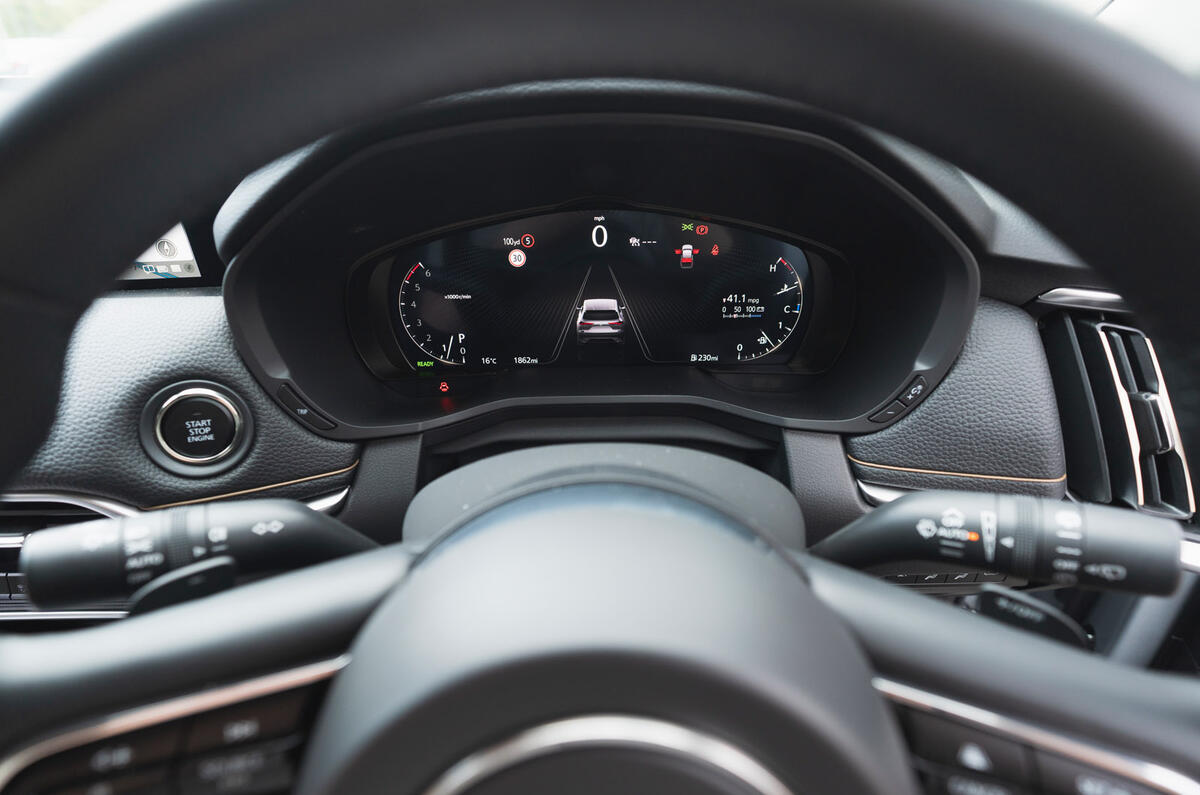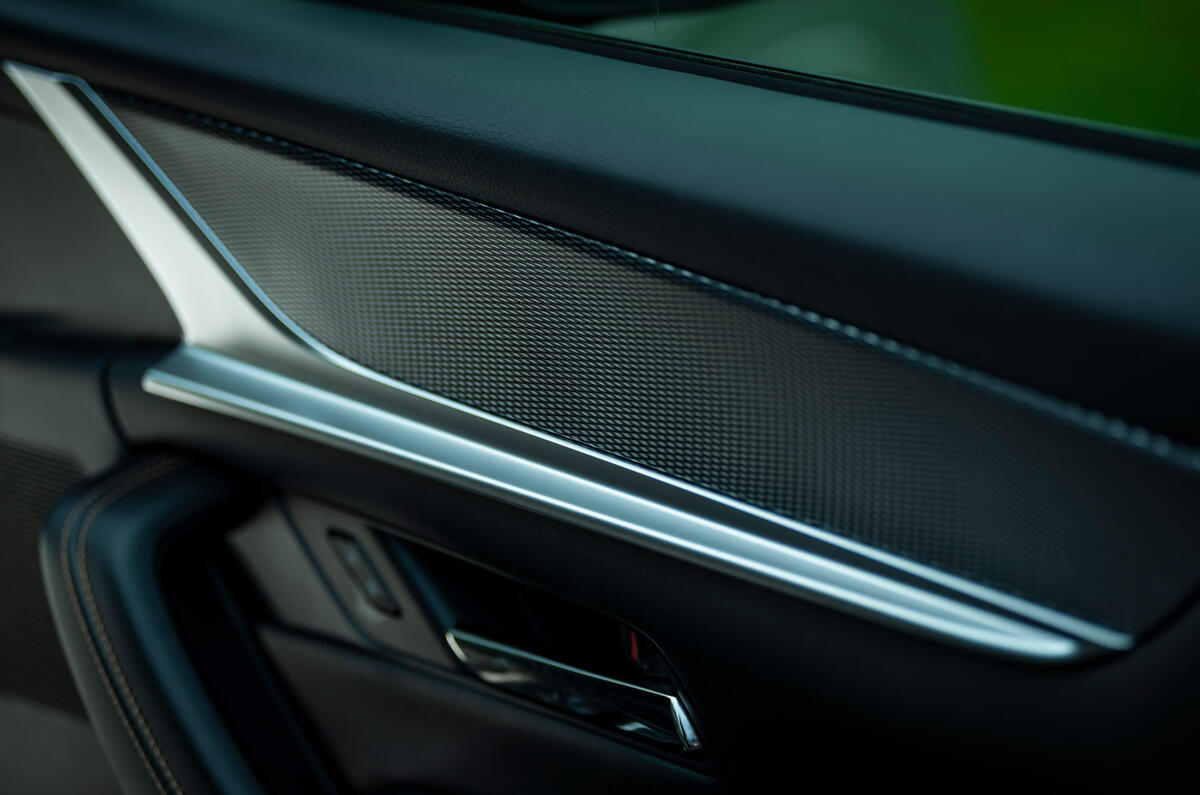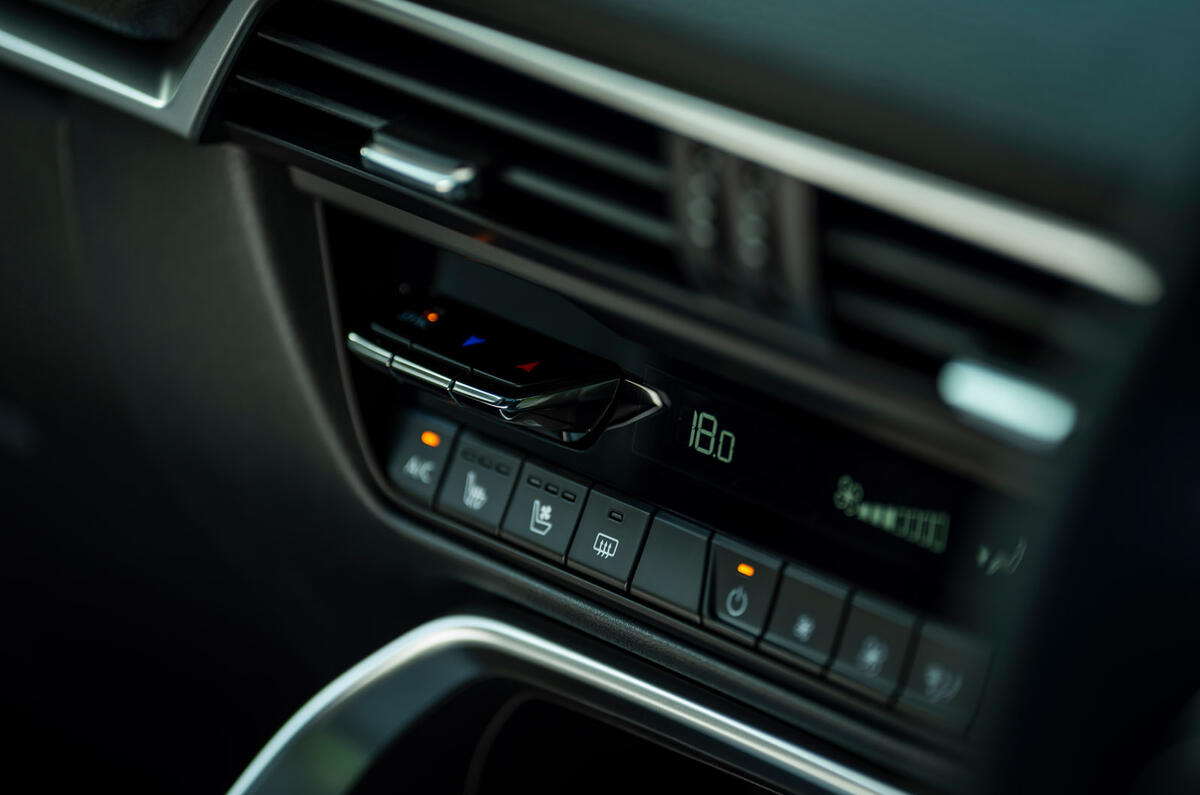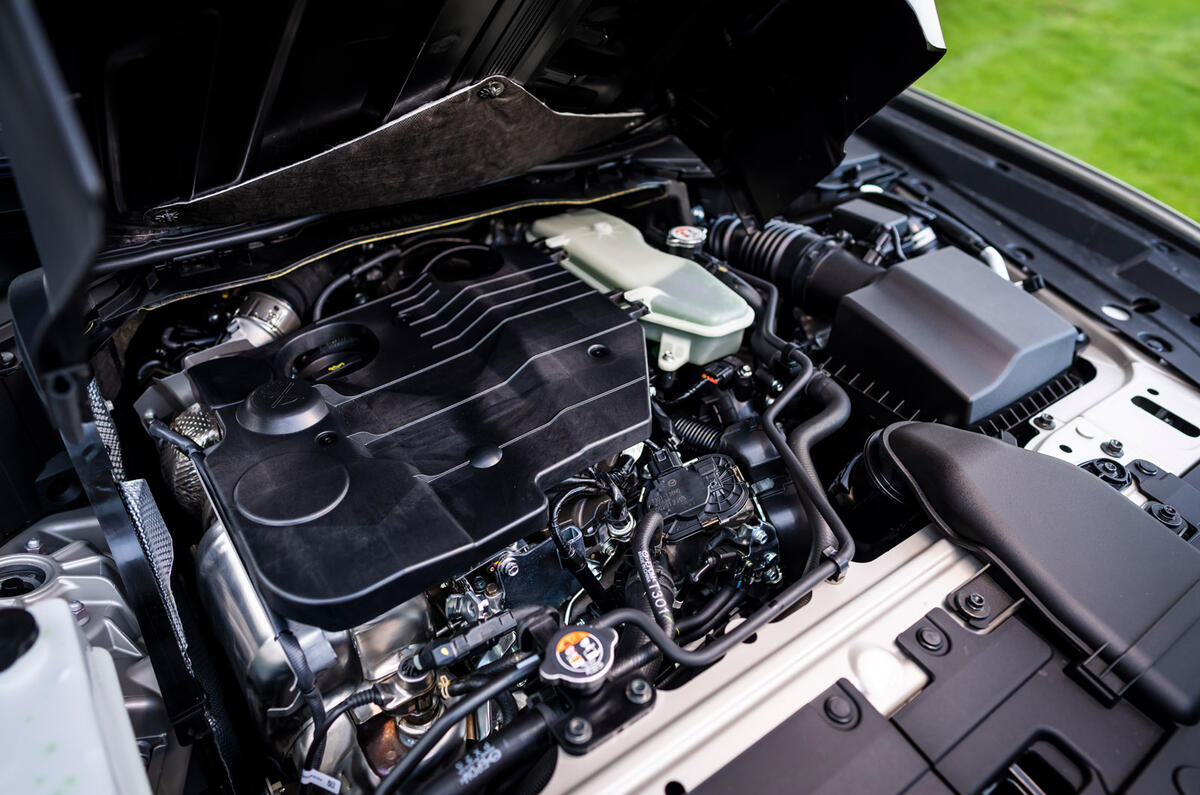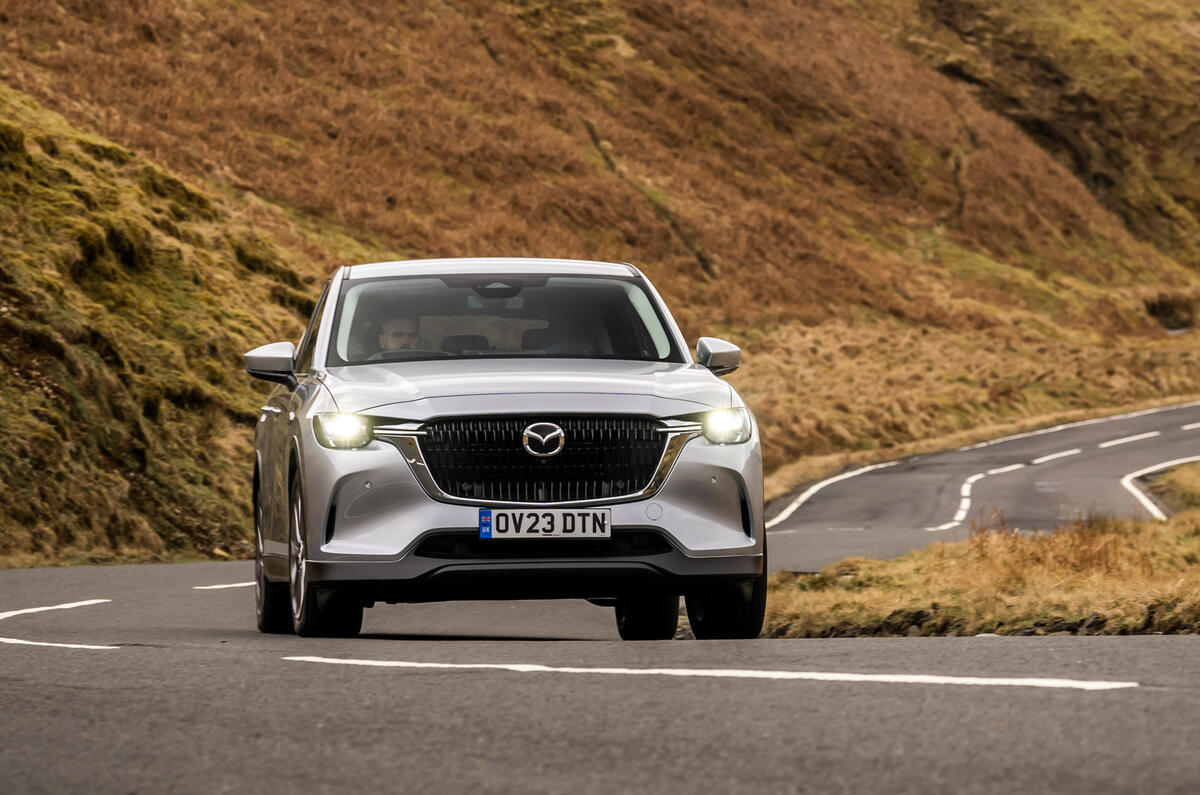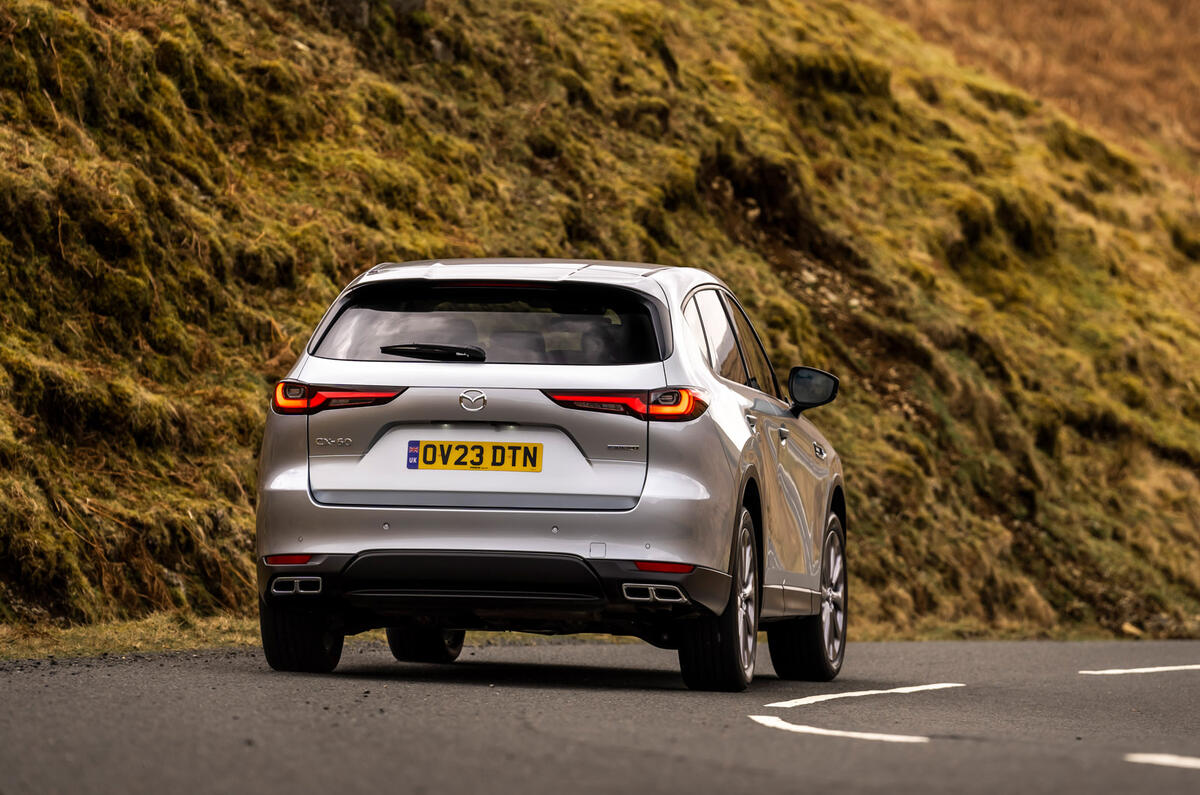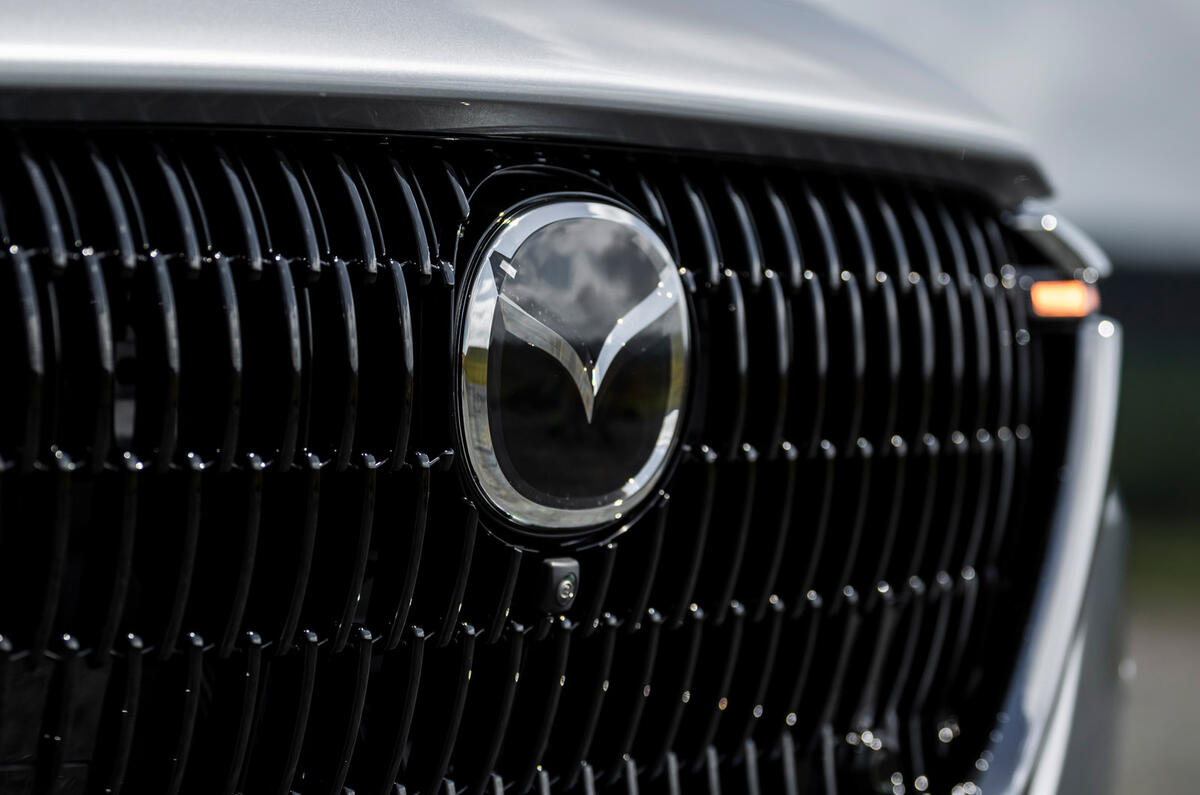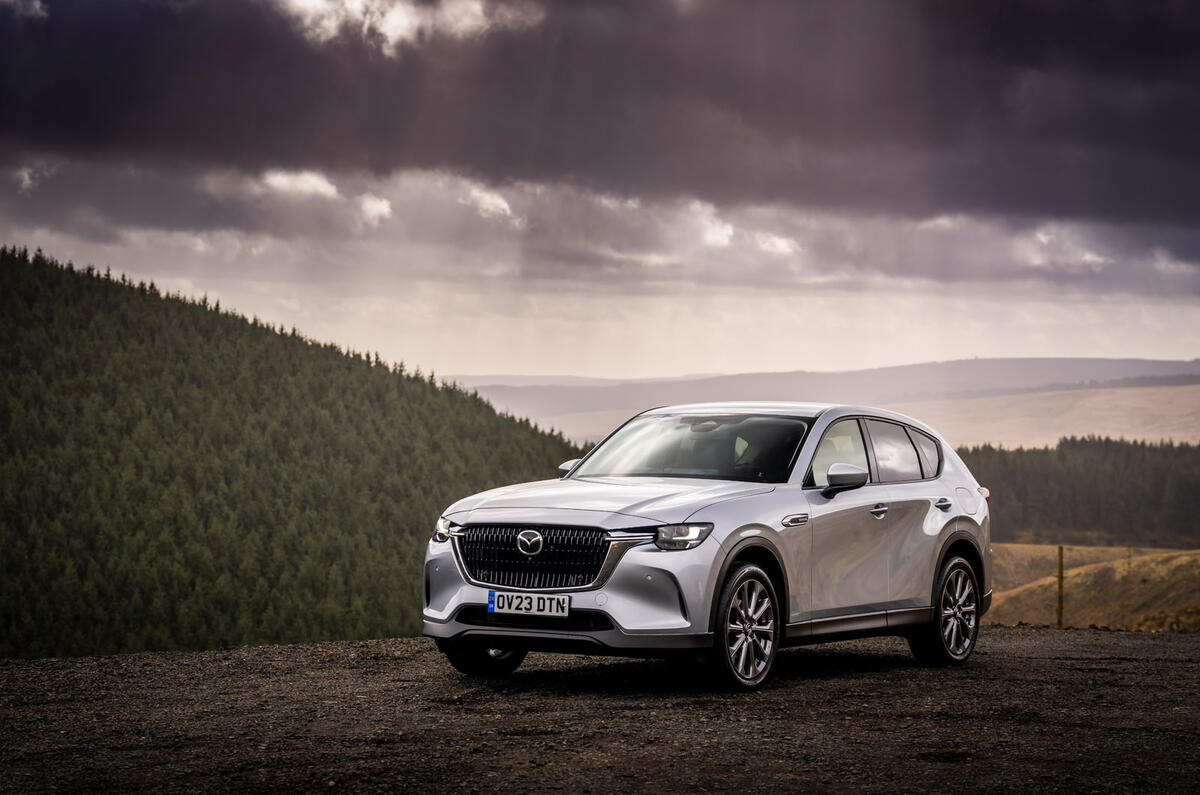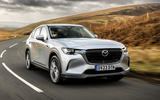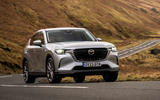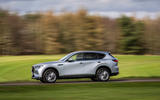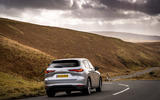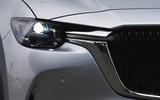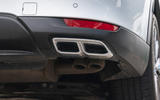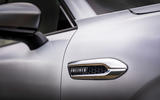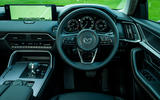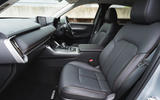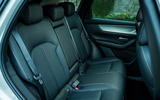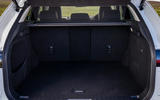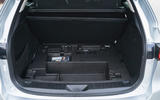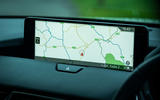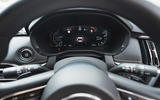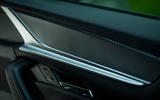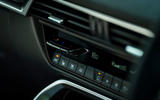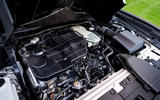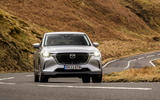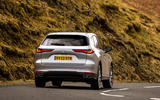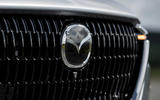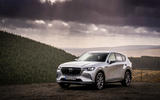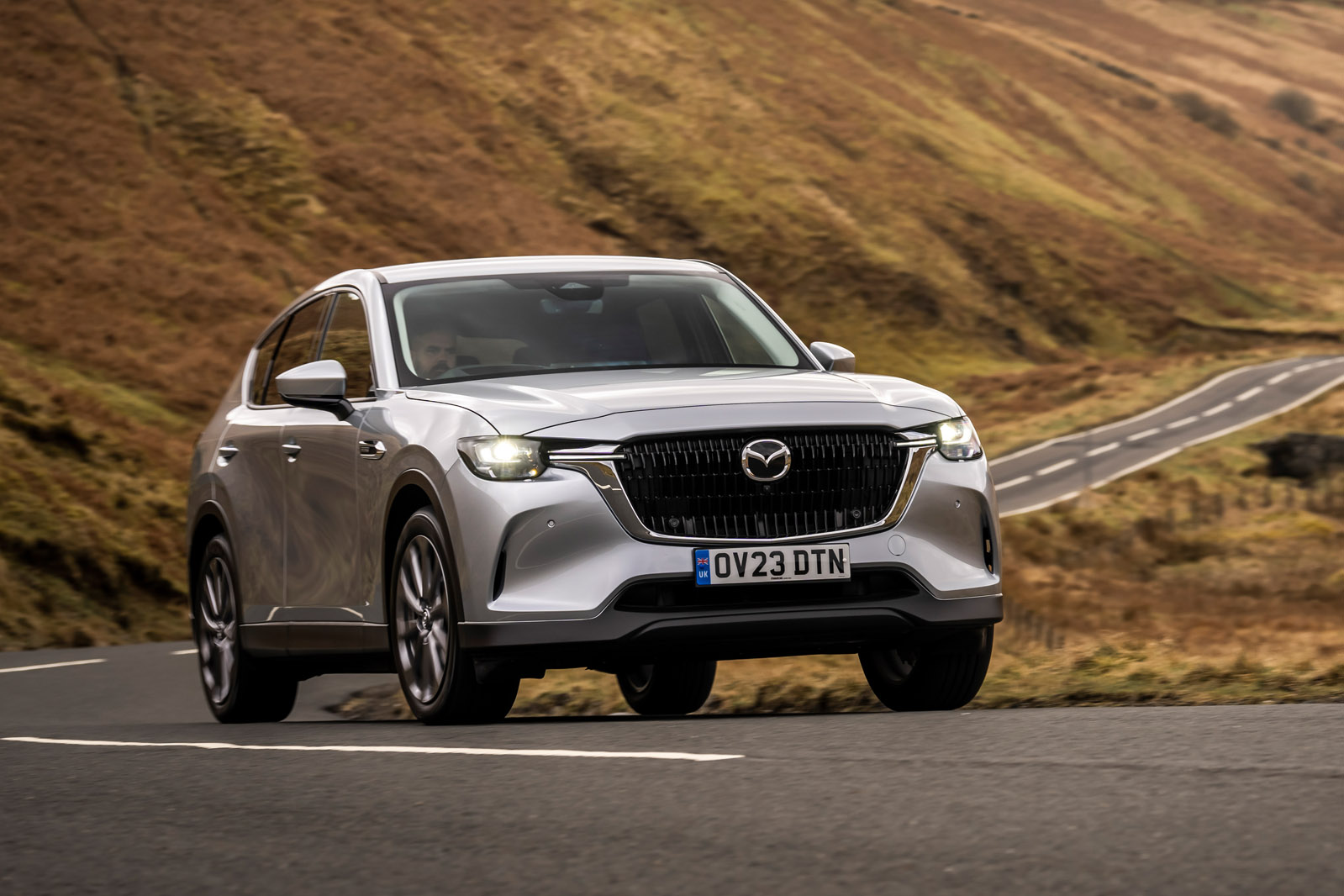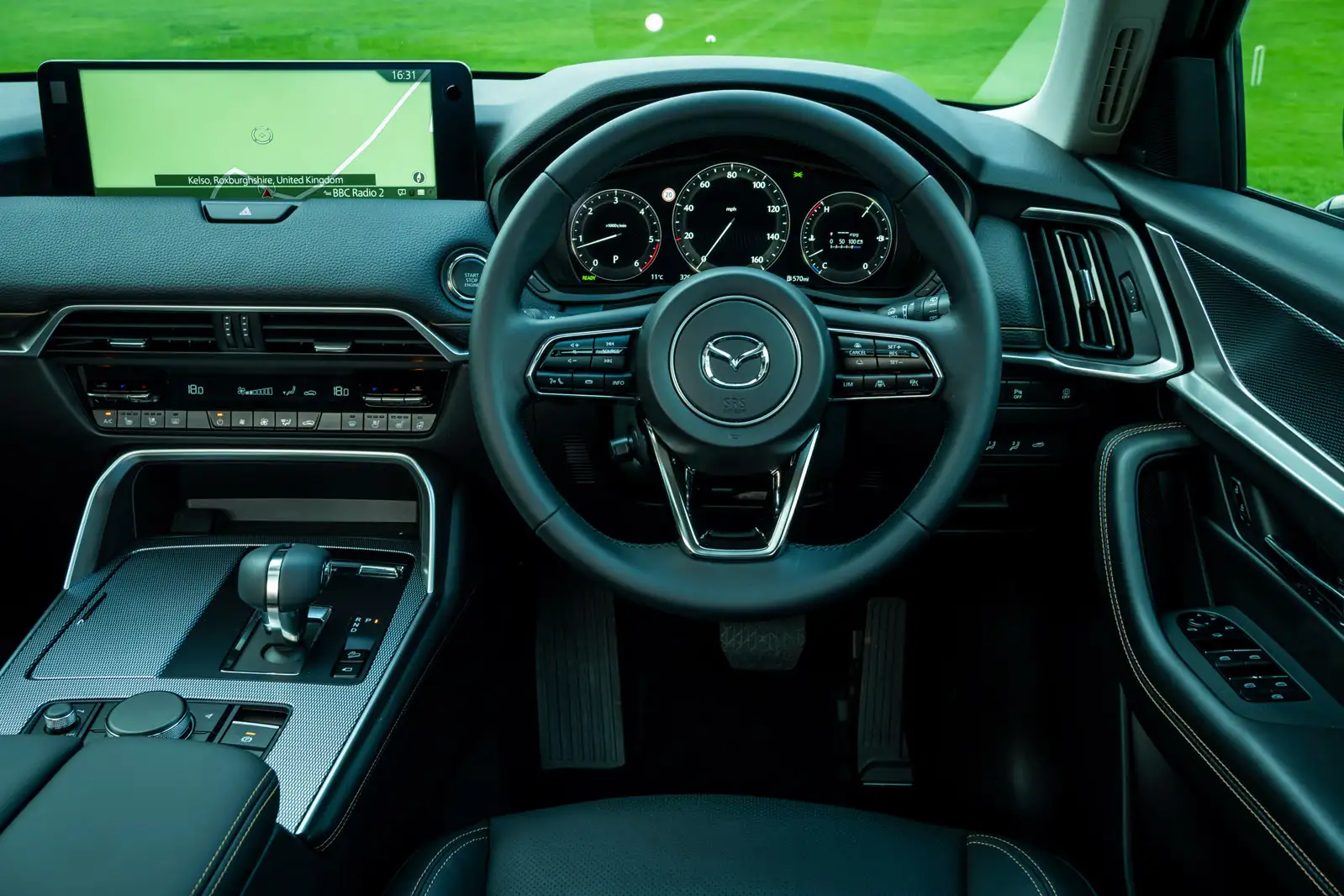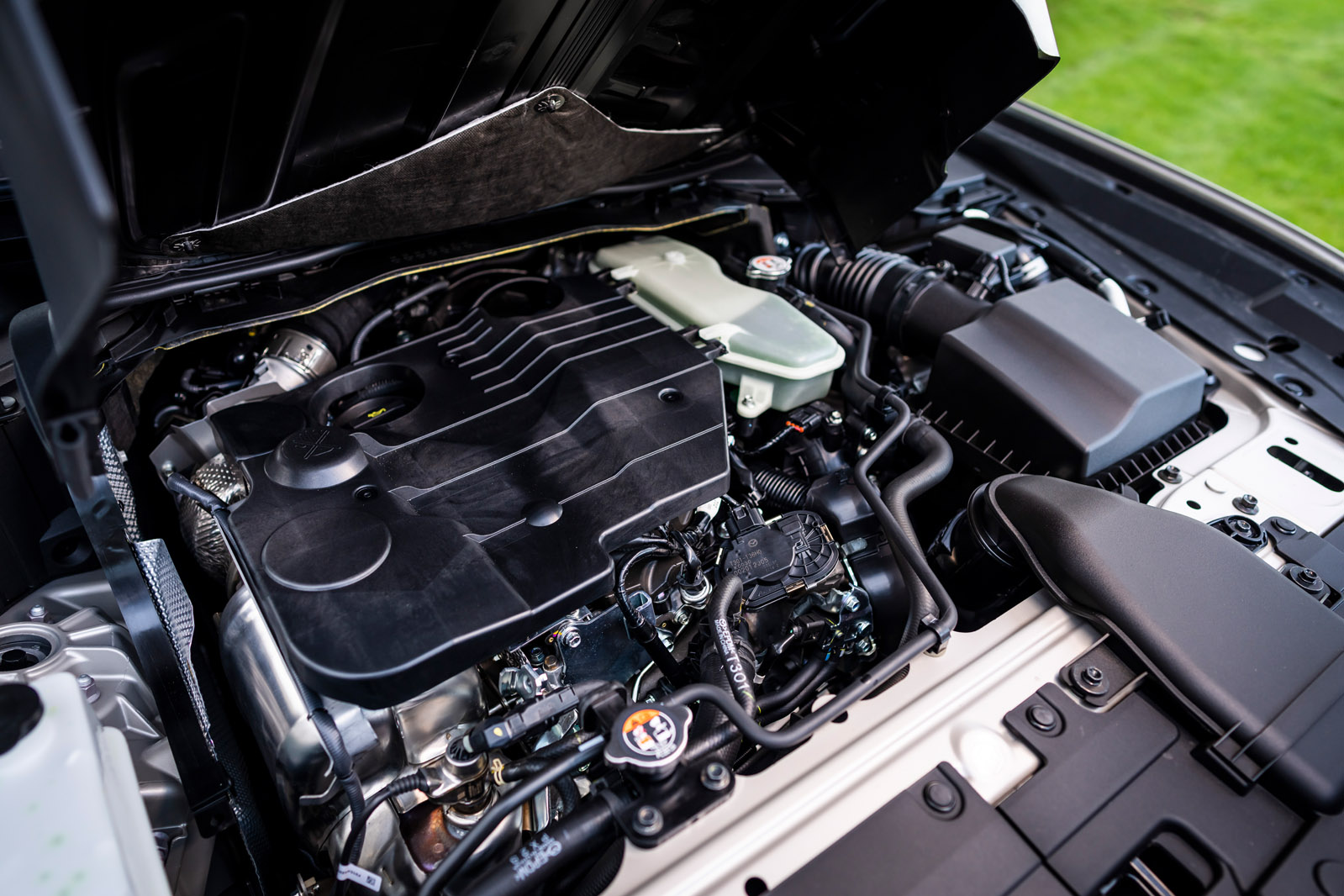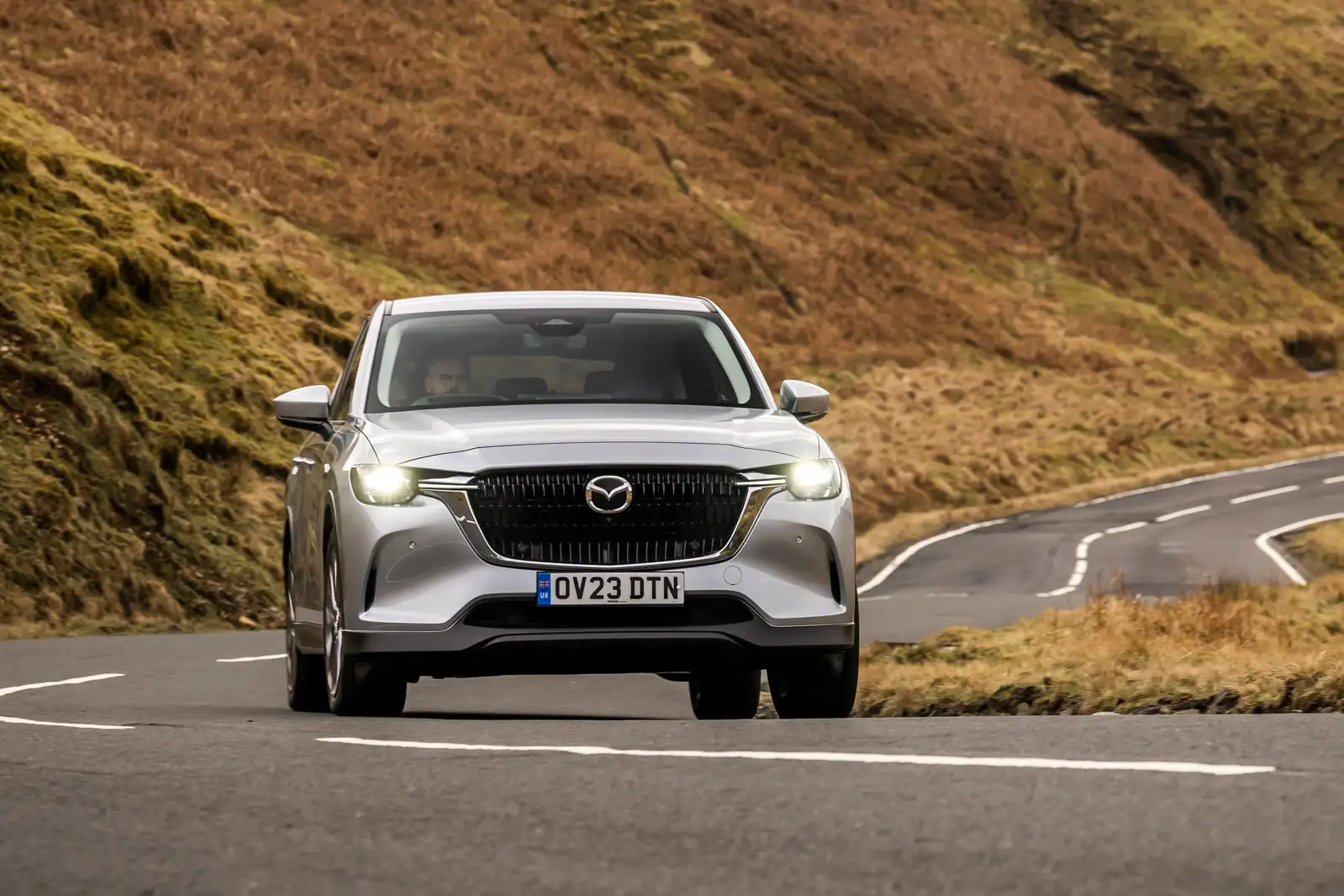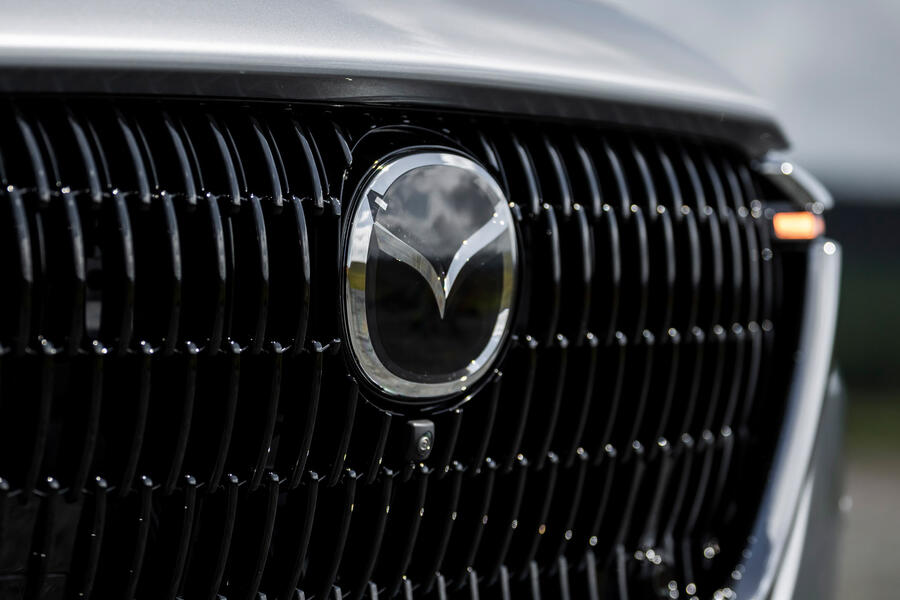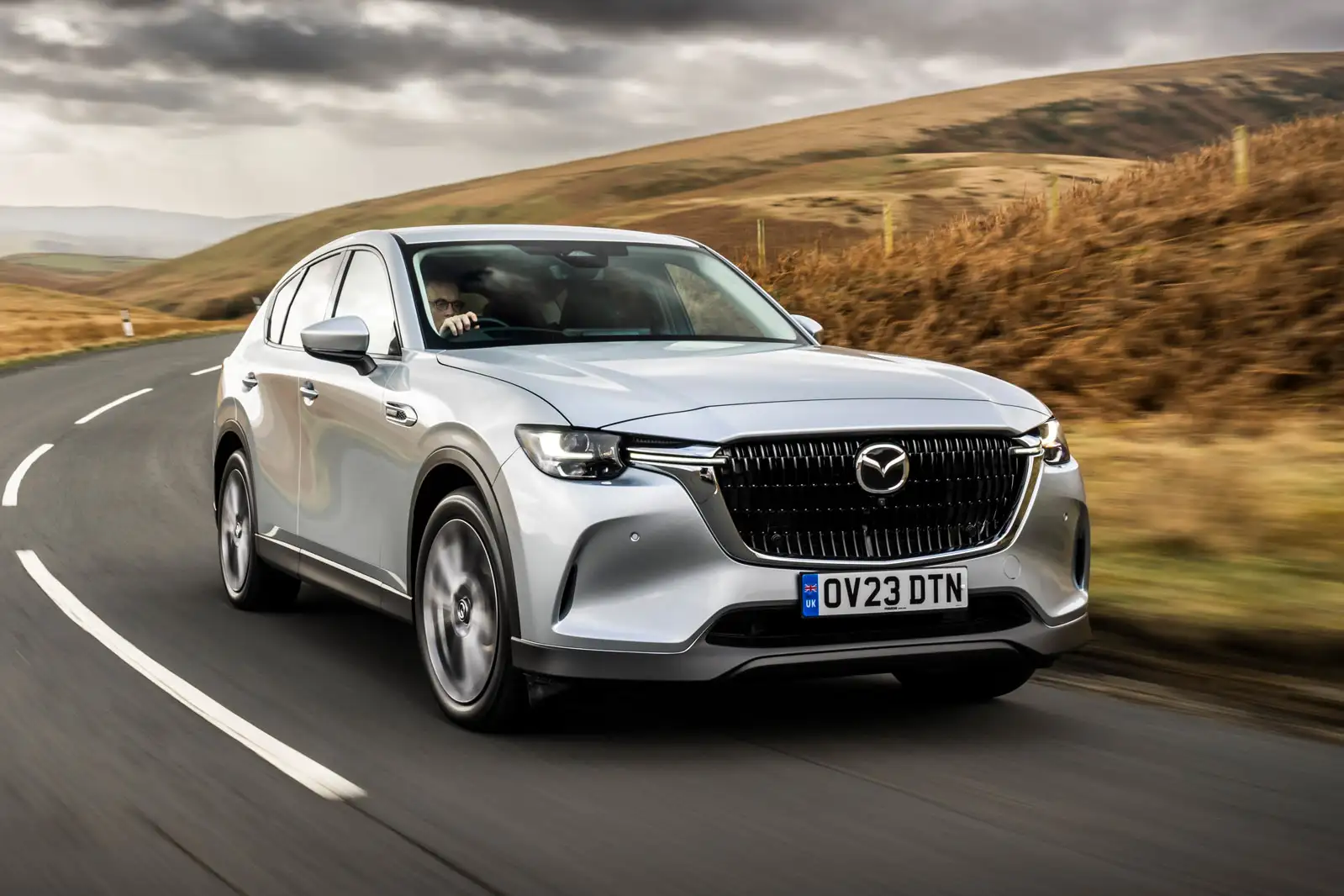We had plenty of gripes with our plug-in hybrid long-termer, but the interior ambience was decidedly not one of them. Mazda wants to establish a uniquely Japanese brand of premium that is different in nature but equal in quality to what you get from the German marques.
That is most obvious in Takumi trim, with its light maple wood, fabrics, leather and unusual stitching. In the entry-level Exclusive-Line, some of the leather and fabric is replaced with slightly less special leatherette. However, you still wouldn’t be disappointed stepping into it from a BMW X3.
The CX-60 also maintains an array of physical buttons and switches – a usability delight. There’s a general feeling of simplicity. That’s mostly a positive, although the digital gauge cluster could have been made more useful with some extra configurability.
The CX-60’s cabin is far from the most practical, however. You might expect the tall and wide centre console, when relieved of the battery pack it houses in the hybrid, to have plenty of deep storage bins, but there are just the two cupholders and a pretty shallow space under the armrest. The wireless charging tray isn’t very deep, and the charger itself often malfunctioned during our testing.
The rear leg room is similar to that in an Alfa Romeo Stelvio or Audi Q5 but slightly tighter than a BMW X3’s. Some SUVs from the class below, which use transverse engines, have more space in the back. The Mazda is quite a way behind on boot space, with just 477 litres (the X3 and Q5 have 550 litres, while the Mercedes GLC has 620). Some of this deficit is explained when you lift up the floorboard. Underneath is actually quite a large space, but it is mostly filled by a bulky and awkwardly shaped piece of polystyrene-like material. It presumably has a noise-dampening function, but it’s hard to believe it couldn’t be shaped in a way that liberates more boot space.
Multimedia system
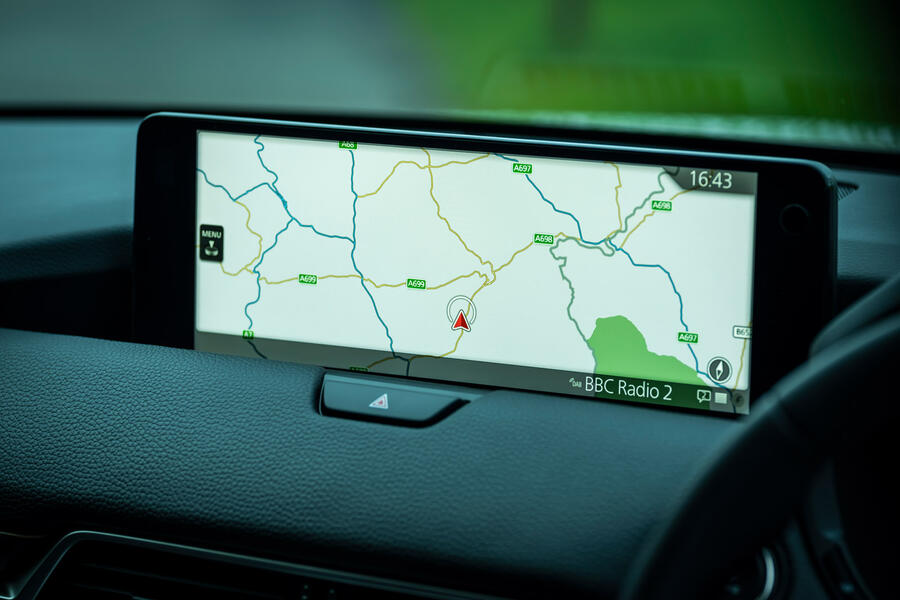
As with almost everything else, Mazda has a clear vision of what’s right and what’s wrong and is sticking with it, prevailing winds be damned. For a long time it refused to offer a touchscreen at all, and while in its most recent models it has one, it only works with Apple CarPlay and Android Auto (both available wirelessly), and then only while stationary. The latter is slightly frustrating, because smartphone mirroring doesn’t work that brilliantly with the rotary controller, although you do get used to it.
Otherwise, the system performs very well, with crisp but restrained graphics, a clear navigation system, not too many menus to navigate and some shortcut buttons to help you do so.
The standard stereo system sounds decent and gives you options to tweak the sound. You can’t have the Bose alternative in the Exclusive-Line, but having tried it on another occasion, it’s not a huge upgrade.



